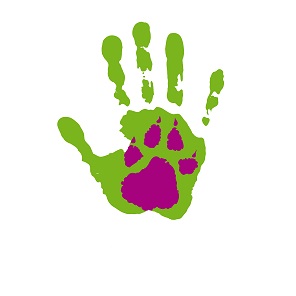Crib Notes: Engagement and Rewards
These are some brief crib notes that might help you understand some of the terminology used by today’s sport dog trainers.
Dogs are motivated by the desire to acquire something. This can be used to train a dog. Classical conditioning works with your dog’s natural behavior to create responses that generates a specific behavior from a dog. This is an involuntary reaction.
If a dog sees a competition ring, or rally signs, and has always had a good time in the presence of those then they will soon get excited at the very sight of the stimulus.
How to Build a Behavior string.
Step #1 Dog follows food to receive a reward
Step #2 Dog hears the command and anticipates the reward
Step #3 After a while the command creates the spike in dopamine, increasing motivation. At this stage you do not need to worry about having food or a reward.
Motivators
Reward event – A reward event is the ‘time spent’ engaged with the dog and giving the dog the reward they want.
Competing motivators – This is one of the most understood aspects of dog training. A new dog is brought into the house. Before any training foundation laid, or rules are set, the dog is taken out to the dog park. The dog is excited and pulls on the leash. A strange dog bullies causing fear, and reactive behavior. Excitement results in lots of running and barking. Within a couple of weeks everyone is frustrated. The dog pulls all the time on the leash, barks at everything which moves, and has started snapping at dogs at the dog park.
All dogs should learn the rules before being taken into an environment where the handler is not the most exciting and engaging thing.
Increasing Prey Drive – dogs love to chase. Movement can be its own reward. Sometimes you need to build increase drive in your dog. This is not too difficult when using classical stimulation. I owned a female German Shepherd with no prey drive. It took less than 2 months to build so much drive that she will now go through anything to get a ball.
Rulemaking must be made before you start rewarding. Corrections cannot be made until the dog understands the rules. A correction may be as simple as standing motionless so the game stops. But if the dog doesn’t know why you stopped they will lose energy. The game isn’t fun, so they stop learning.
Mark the behavior. The dog needs a cue that tells it you want the behavior to continue. We commonly see dogs that down. The moment the handler praises the dog, it stands up. This is because it doesn’t associate the behavior with the reward. There is a problem in the communication. (It may also mean that your body language is giving messages you don’t want it to give.)
Vary the variation of the reward event.
Food – when starting a behavior you can walk away while holding out the reward. The dog will follow you to get the reward. You do not need to stop after each movement. This is a mistake made by new trainers. This is one way to teach dogs that events are short lived, and end abruptly,
Targeted Frustration – dog misses the reward. But do not withhold the reward or this will create negative frustration.
Auditory Stimulus – I sent a young dog who was very bonded to me into the show ring for the first time with a professional handler. She was more concerned with finding me in the crowd. I was the ‘competing stimulator.’ But when she needed to stop I made ‘our sound’. Immediately she stacked and held it. While this may not be the best example, it does show the power of creating a short click, buzz, or other sound that your dog will associate with ‘excitement.’
Stringing several chase and reward events together is a great way to build sustained behaviors.
Toys and Tugs – toys are a great classical conditioning tool. It is very easy to create an arousal response.
Movement and Luring – dogs love things that move. Any movement will catch a dog’s attention. The more you move, the more focused your dog will be (see targeting).
Luring a dog works to build focus on you. The dog follows the treat in your hand. The dog becomes conditioned to follow you and work with you.
Chase – My last litter all started (gently) on a toy attached to a horse lunge whip. They loved to chase, and I made sure they chased ‘to me’. Older dogs love to chase. Not all of us are athletes and can lure a dog down the length of the training hall and back, but we can throw balls.
I often use a chase game to end a training session. It helps he dog relieve any built up stress or frustration. The dog and I have a great time, and no matter how productive the training session was, or how many repetitions we did, a good chase always ends the day with a happy dog.
Out Word – There needs to be a word that signifies the game is over. The training is done. It is time to settle.
Leave it – I always include a ‘break’ off word. I start with leave it, and strengthen the word until I can stop my dog ‘mid-flight.’
